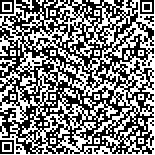| 本文已被:浏览 927次 下载 412次 |

码上扫一扫! |
| 补饲对放牧西门塔尔犊牛生长性能及血液指标的影响 |
|
徐萍1,敖日格乐1*,王纯洁2,斯木吉德1,陈浩1,刘波1,张晨1,崔银雪1,何利娜1,曹家铭1,武思同1,刘飞鸿1
|
|
|
| (1.内蒙古农业大学 动物科学学院, 呼和浩特 010018;2.内蒙古农业大学 兽医学院, 呼和浩特 010018) |
|
| 摘要: |
| 为研究放牧加补饲对西门塔尔犊牛生长性能和血液指标的影响,选取内蒙古赤峰草原的放牧犊牛16头,分为放牧组和放牧加补饲组,测量体重、体尺等生长性能指标,用酶联免疫法测定血清中总蛋白(TP)、尿素氮(BUN)、葡萄糖(GLU)、白介素1(IL-1)和白介素2(IL-2)等血液指标。结果表明:1)在正试期的0~30 d 2组犊牛的日增重无显著差异(P>0.05),但在31~60 d放牧加补饲组犊牛日增重显著高于放牧组(P<0.05);在整个试验阶段,放牧加补饲犊牛体尺指标除胸围外,均高于放牧组,但差异不显著(P>0.05)。2)放牧加补饲使犊牛血清中尿素氮(BUN)和葡萄糖(GLU)含量显著提高(P<0.05);而总蛋白(TP)和甘油三酯(TG)含量差异不显著(P>0.05)。3)放牧加补饲犊牛免疫球蛋白G(IgG)和白介素1(IL-1)含量显著升高(P<0.05);而三碘甲状腺原氨酸(T3)、甲状腺素(T4)、生长激素(GH)和白介素2(IL-2)含量有高于放牧组的趋势,但差异不显著(P>0.05)。综上,补饲可提高放牧西门塔尔犊牛的生长性能,改善血液生化指标和血清激素水平,并可改善西门塔尔犊牛整体免疫水平。 |
| 关键词: 放牧补饲 西门塔尔犊牛 生长性能 血清指标 |
| DOI:10.11841/j.issn.1007-4333.2020.09.06 |
| 投稿时间:2020-02-23 |
| 基金项目:国家重点研发计划(2018YFD0501703) |
|
| Effects of supplementary feeding on growth performance and blood biochemical index of grazing Simmental calves |
|
XU Ping1,Aorigele1*,WANG Chunjie2,Simujide1,CHEN Hao1,LIU Bo1,ZHANG Chen1,CUI Yinxue1,HE Lina1,CAO Jiaming1,WU Sitong1,LIU Feihong1
|
| (1.College of Animal Science, Inner Mongolia Agricultural University, Hohhot 010018, China;2.Veterinary Medical College, Inner Mongolia Agricultural University, Hohhot 010018, China) |
| Abstract: |
| To investigate the effects of grazing supplementary feeding on growth performance and blood indexes of Simmental calves, sixteen grazing Simmental calves in Chifeng grassland were divided into grazing group and grazing plus feeding group, respectively. Body weight, body size and other growth performance indicators were measured. Total protein(TP), urea nitrogen(BUN), glucose(GLU), interleukin 1(IL-1)and interleukin 2(IL-2)in serum were detected by ELISA. The results showed that: 1)There was no significant difference in daily weight gain between two groups of calves at 0-30 d in the formal trial period(P>0. 05). However, the daily weight gain of calves in the grazing plus feeding group was significantly higher than that those calves in the grazing group at 31-60 d(P<0. 05). In the whole experimental stage, except for the heart girth, the body size in grazing and supplementary feeding group were higher than that in grazing group, but the differences were not significant(P>0. 05). 2)The contents of urea nitrogen(BUN)and glucose(GLU)in serum of calves were significantly increased by grazing and supplementary feeding(P<0. 05). There was no significant difference in total protein(TP)and glycertin trilaurate(TG)content. 3)The levels of immunoglobulin G(Ig G)and interleukin 1(IL-1)calves were significantly increased by grazing and supplementary feeding(P<0. 05). The contents of triiodothyronine(T3), thyroid hormone(T4), growth hormone(GH)and interleukin 2(IL-2)were higher than those in grazing group, but their differences were not significant(P>0. 05). In conclusion, the supplementary feeding can improve the growth performance of grazing Simmental calves, the blood biochemical index, serum hormones level and immune level of Simmental calves. |
| Key words: Simmental calves grazing and supplementary feeding growth performance serum indexes |